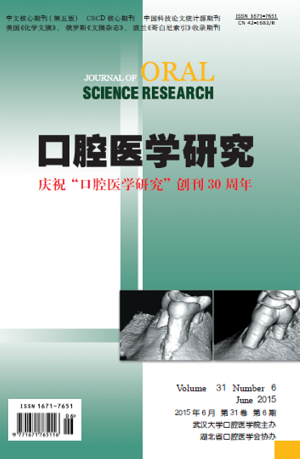|
|
Expression and Clinicopathological Significance of CCND1, ORAOV1 and ERCC1 in Tongue Squamous Cell Carcinoma.
HE Li-ming, GUO Xin-cheng, TAO Shan-song, et al.
2015, 31(6):
597-600.
Objective: To study the expression of CCND1, ORAOV1 and ERCC1 genes in tongue squamous cell carcinoma(TSCC), and investigate their associations with the clinicopathological features. Methods: Expression of CCND1, ORAOV1 and ERCC1 were analyzed in tissue microarrays of 38 TSCC patients and 4 cases of normal tongue tissue by immunohistochemistry. Results: The expression of CCND1 was significantly higher in TSCC(P<0.05), while the level of CCND1 overexpression in TSCC showed no significant difference compared with that in normal tongue tissues. There were no correlations between the intensities of CCND1 and some tumour parameters, such as age, gender, histological grade, and lymph node metastasis. The expression of ORAOV1 in TSCC was significantly higher(P<0.05), and tightly associated with lymph node metastasis(P<0.05). Though the level of ORAOV1 overexpression was not significant in TSCC, ORAOV1 overexpression level was positively related to histological grade(P<0.05). Both the expression and overexpression of ERCC1 in TSCC were markly lower than those in the normal tissues(P<0.05), and showed a close correlation with lymph node metastasis(P<0.05); and the level of ERCC1 overexpression in the poor differentiation squamous cell carcinoma was higher than that in the well and moderate differentiation squamous cell carcinoma, but the difference was not significant. Conclusion: CCND1 and ORAOV1 were overexpressed in TSCC tissues while ERCC1 was significantly downregulated. The detection of CCND1, ORAOV1 and ERCC1 might play an important role in the early diagnosis of TSCC.
References |
Related Articles |
Metrics
|

